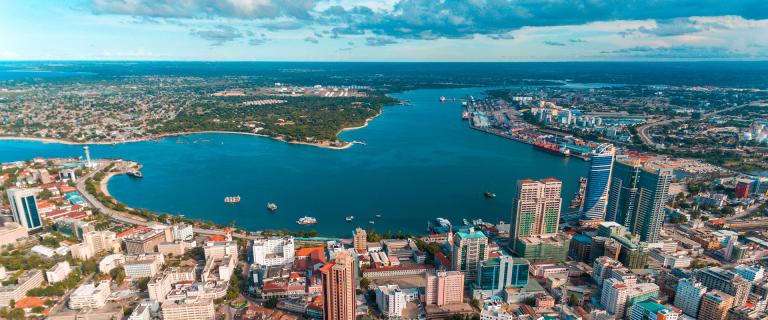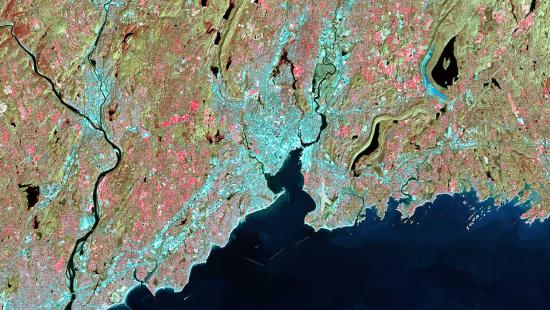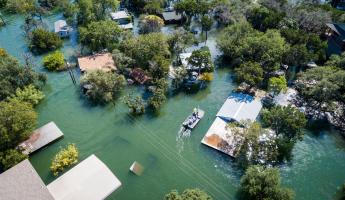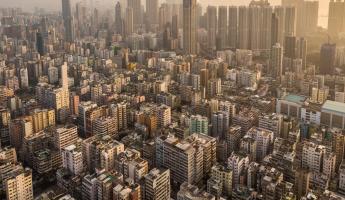The second portion of the Intergovernmental Panel on Climate Change Sixth Assessment report released last month painted the starkest picture yet of our rapidly changing climate and the ever-increasing threats posed to people and ecosystems if urgent action is not taken
Yet, the third part of the IPCC report, released April 4, provides some hope in the push for climate action, focusing on progress in climate mitigation, equity and justice, and urban mitigation.
“The exciting message with cities is that it’s not too late to do something,” says Karen Seto, Frederick C. Hixon Professor of Geography and Urbanization Science at YSE and one of two coordinating authors of the urban mitigation chapter of the report. “We’re going to be adding 2.5 billion more people to urban areas by 2050 — and a lot of those cities have not been built yet. The world is adding a new city of 1 million every 10 days, the pace of development is very high, but there’s still a lot that can be done.”
While the last climate report published in 2014 investigated how the spatial aspects of cities can mitigate global warming and greenhouse gas emissions, Seto says this report focused on a systems approach to designing and building cities and how cities affect regions beyond urban areas. She added that this report looked not only at existing cities, but looked more closely at smaller cities and towns, as well as new and rapidly growing cities.
This broader look toward the future, Seto says, shows “there is a lot of future emissions we can actually avoid if we design, build and operate our cities differently.”
The report states that the global share of emissions from urban areas increased between 5% to 10% between 2015 and 2020. That concentration of people and activity, however, presents an opportunity to increase resource efficiency and significantly reduce GHG emissions through better design and greener infrastructure — centered around people — that would result in beneficial cascading effects across numerous supply chains and sectors, particularly energy.
“There are a number of strategies that could be deployed that change our demand for energy, but we need to have an enabling policy environment and to rethink how we design and build infrastructure,” Seto says.
Another positive takeaway, Seto says, is that cities are “much nimbler” than national governments in responding to climate change. City leaders not only oversee smaller land areas and have smaller constituencies to whom they respond, she explains, but they are more likely to experience and understand the climate challenges that cities face.
For the first time, this IPCC report also highlighted “demand side management,” or the drivers of consumption and greenhouse gas emissions. More specifically, the report touched on strategies that can enable and encourage consumers to modify their electricity usage in an effort to lower demand. These interventions, the report states, can potentially reduce energy demand by supporting the shift to more energy efficient modes of transportation; projections show that limiting warming to the 1.5 degrees Celsius benchmark would drop transport-related emissions by roughly 60 %.
Narasimha Rao, associate professor of energy systems at YSE and a contributing author on the demand side chapter, focused specifically on basic well-being and its relation to climate mitigation. It’s critical, Rao says, to understand the evolving synergies between these two fundamental goals.
Newsletter
Biweekly, we highlight three news and research stories about the work we’re doing at Yale School of the Environment.
“The big finding in this chapter is that improving living standards in an effort to eradicate poverty does not pose a significant challenge to climate mitigation,” says Rao, whose research examines the relationship between energy systems, human development, and climate change. He also explained that scenario analyses within the report show demand-side measures aimed at climate mitigation can reduce energy demand while not compromising living standards.
With urban populations on the rise, Rao sees several ways that demand-side management can be integrated to reduce energy demand — including improvements in public transportation, residential construction, and smart technologies — but few large-scale efforts have been attempted to date. In fact, Rao says, current urban patterns “are not promising.” Concentrated wealth within cities creates more consumption and more emissions, and migration from rural to urban areas is creating further inequities in access to energy services.
“More work needs to be done to investigate how cities are going to move forward, particularly in the global South where we’re seeing considerable urban growth,” he says. “Sustainable development, like greening urban areas, improving public transportation, making energy services more accessible — they can all have benefits for well-being and for the climate.”






